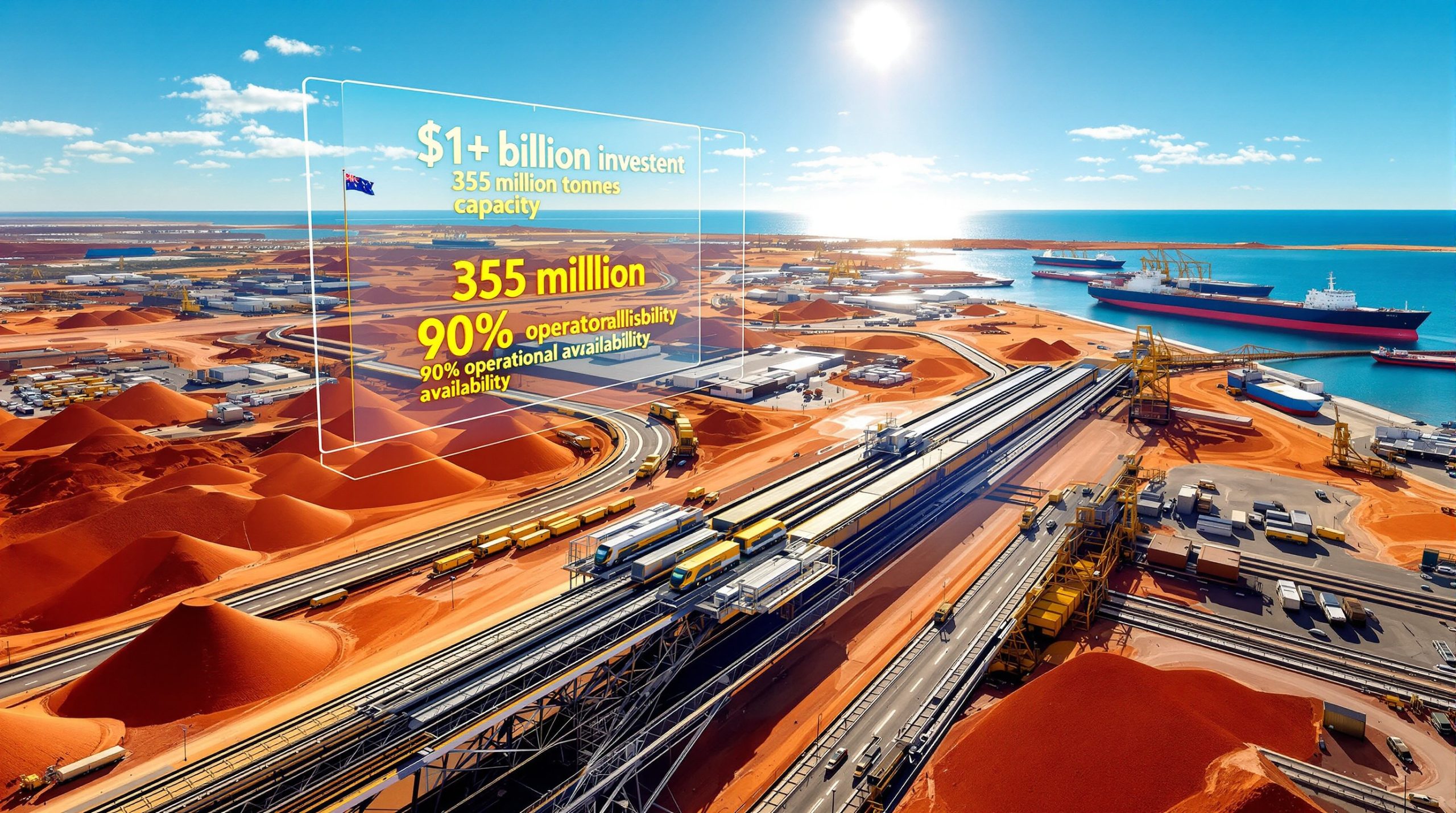Understanding High-Purity Silica's Critical Role in Modern Technology
The potential for high-purity silica exploration in New South Wales represents a transformative opportunity for Australia's critical minerals sector. This specialised material, containing silica content exceeding 99.8%, serves as the foundation for semiconductor manufacturing, solar panel production, and advanced optical systems that power modern technology.
High-purity silica's significance extends far beyond basic industrial applications. The semiconductor industry demands ultra-pure silica materials meeting specifications of 99.99% or higher, with some advanced integrated circuits requiring purity levels reaching 99.9999%. Solar cell manufacturing utilises metallurgical-grade and solar-grade silicon with purity specifications ranging from 99.9999% to ultra-high purity levels, while speciality glass for precision optical instruments requires 99.9%+ purity.
Industrial Applications Driving Global Demand
The technology sector's reliance on ultra-pure silica stems from stringent manufacturing requirements where impurities at parts-per-million levels can compromise device performance and operating reliability. Key applications include:
- Semiconductors: Silicon wafer production utilising Czochralski or Float Zone crystal growth methods
- Photovoltaics: Solar cell manufacturing requiring ultra-high purity starting materials
- Speciality Glass: Optical components for lenses, prisms, and precision instruments
- Fiber Optics: Optical fibre manufacturing demanding minimal optical loss characteristics
Market Projections and Supply Chain Dynamics
Global high-purity silica market valuation reached approximately $2.3 billion in 2023 and is projected to reach $3.8 billion by 2030, representing a compound annual growth rate of 7.8%. This expansion reflects growing demand from technology sectors and renewable energy adoption, while the rubber industry contributes additional market diversification.
Current global production remains concentrated among limited suppliers, creating supply chain vulnerability for technology industries dependent on these materials. This concentration presents significant opportunities for new producers in geologically favourable regions like NSW, particularly as critical minerals energy security becomes increasingly important.
What Makes NSW's Geological Landscape Ideal for Silica Exploration?
Recent geological assessments conducted by the Geological Survey of NSW have revealed exceptional potential for high-purity silica exploration in New South Wales across multiple distinct regions with varying geological characteristics. The comprehensive state-wide evaluation analysed 400 samples across NSW, with 50 samples exceeding the 99.8% purity threshold, representing a 12.5% success rate for high-purity identification.
The highest recorded purity level achieved 99.96% SiO₂, positioning NSW competitively within global silica markets and demonstrating the state's geological endowment for critical minerals development.
Regional Distribution Analysis
| Region | Geological Setting | Exploration Potential | Key Characteristics |
|---|---|---|---|
| Broken Hill | Granitic quartz pipes | High-grade deposits | Hydrothermal crystallisation zones |
| New England | Pegmatite formations | Diverse mineral associations | Coarse-grained igneous complexes |
| Lachlan | Hydrothermal systems | Multiple occurrence types | Variable alteration assemblages |
| State-wide | Sedimentary units | Natural beneficiation | Chemical precipitation deposits |
Geological Diversity Creating Multiple Opportunities
NSW's silica potential spans four distinct geological environments, providing explorers with multiple targeting strategies and reducing geological risk:
-
Granitic Quartz Pipes (Broken Hill region):
- Form through high-temperature hydrothermal processes
- Often associated with pegmatitic mineral assemblages
- Historical mining records document occurrences
-
Pegmatite Formations (New England region):
- Contain crystalline quartz with variable purity levels
- Multiple mineralisation episodes create diverse association types
- Established mining infrastructure for related minerals
-
Hydrothermal Quartz Bodies (Lachlan region):
- Result from fluid precipitation in fracture systems
- Demonstrate multiple occurrence types within single systems
- Potential for high-grade concentrations
-
Silica-Enriched Sedimentary Units:
- Chemical sedimentary deposits with primary silica content
- Secondary enrichment through natural weathering processes
- Natural beneficiation mechanisms concentrate purity
How Do NSW's Silica Quality Metrics Compare Globally?
The comprehensive sampling programme conducted across NSW demonstrates the state's competitive position in global high-purity silica markets through systematic analytical evaluation of geological potential.
Purity Analysis Results
Key Statistics from State-Wide Assessment:
- 400 samples analysed across diverse geological settings
- 50 samples exceeded 99.8% purity threshold
- Highest recorded purity: 99.96% SiO₂
- Multiple deposit types identified across regional settings
Quality Benchmarking Against International Standards
The 99.96% purity level achieved in NSW samples meets specifications for many high-purity applications including specialised optical systems and certain semiconductor precursor materials. This positions NSW competitively against established global suppliers while offering proximity advantages to Asian technology markets.
Global Producer Benchmarks:
| Producer/Region | Primary Purity Grade | Market Applications | Production Scale |
|---|---|---|---|
| European Producers | 99.5-99.99% | Speciality glass, electronics | Large-scale |
| North American Sources | 99.8-99.99% | Semiconductor, solar | Established |
| Asian Suppliers | 98-99.5% | Industrial, foundry | High-volume |
| NSW Potential | Up to 99.96% | Multi-application | Development stage |
While semiconductor-grade applications typically require 99.99%+ purity necessitating secondary purification processing, NSW's natural purity levels provide excellent starting material for various downstream applications. Furthermore, understanding these deposit tiers guide principles helps investors assess the commercial viability of different silica occurrences.
Which Exploration Techniques Are Most Effective for NSW Silica Discovery?
Modern exploration methodologies for silica discovery in NSW combine traditional geological mapping with advanced geochemical analysis to identify high-potential targets across diverse geological terrains. These methods are evolving rapidly alongside mining industry trends that emphasise precision and environmental responsibility.
Geochemical Analysis Protocols
Advanced analytical techniques enable precise determination of silica purity levels and associated mineral content, helping distinguish between industrial-grade and high-purity occurrences:
Analytical Methods Employed:
- X-Ray Fluorescence (XRF) Analysis: Real-time elemental composition with detection limits of 1-10 ppm for major impurities
- Inductively Coupled Plasma Mass Spectrometry (ICP-MS): Ultra-sensitive analysis with parts-per-trillion detection capabilities
- Scanning Electron Microscopy with EDS: Spatial elemental mapping and microstructural characterisation
- Spectroscopic Analysis: Detection of colour centres and structural defects affecting optical applications
Historical Data Integration
Key Insight: Archived materials from historical mining operations provide valuable exploration data, including samples from previously inaccessible sites that offer insights into critical mineral potential not recognised during original operations.
Dr. Phil Blevin, Chief Geoscientist at the Geological Survey of NSW, emphasised the significance of historical specimen collections in modern exploration targeting. These archived materials from mines no longer accessible provide direct geological evidence of high-purity silica occurrences, offering contemporary explorers substantial advantages in prospect evaluation.
The WB Clarke Geoscience Centre in Londonderry serves as a central hub for advanced geological analysis, utilising cutting-edge equipment to support exploration companies and research institutions with essential analytical services for silica quality assessment. In addition, proper interpretation of exploration drill results remains crucial for successful development programmes.
What Government Initiatives Support NSW Silica Development?
The NSW government has implemented comprehensive support mechanisms through its Critical Minerals and High-Tech Metals Strategy to encourage critical minerals exploration and development throughout the state.
Critical Minerals Strategy Implementation
Minister for Natural Resources Courtney Houssos announced the silica assessment findings at the WB Clarke Geoscience Centre in November 2025, emphasising government commitment to positioning NSW as a critical minerals hub. The strategy focuses on:
- Providing pre-competitive geological data to reduce exploration risks
- Supporting advanced manufacturing development capabilities
- Facilitating private sector investment through risk de-risking mechanisms
- Establishing analytical infrastructure for industry support
Infrastructure and Research Support
The WB Clarke Geoscience Centre serves as NSW's premier geological research facility, providing:
Analytical Capabilities:
- Advanced geochemical analysis equipment
- Specialised purity assessment protocols
- Technical support for exploration companies
- Research collaboration opportunities
Strategic Advantages:
- Reduced analytical costs for explorers
- Accelerated project development timelines
- Quality assurance for international markets
- Technical expertise accessibility
How Does NSW's Strategic Location Benefit Silica Market Access?
NSW's geographical position provides significant advantages for silica producers seeking access to both domestic and international markets, particularly the rapidly expanding Asian technology sector. However, developing a domestic critical minerals reserve remains equally important for long-term supply security.
Export Infrastructure Capabilities
The state's established port facilities and transportation networks enable efficient pathways to Asian technology markets, where demand for high-purity silica continues expanding rapidly. Key advantages include:
- Port of Newcastle: Australia's largest coal export port with diversification potential
- Port Botany: Container facilities suitable for processed mineral products
- Rail Networks: Efficient inland transportation to port facilities
- Road Infrastructure: Supporting regional mining operations
Domestic Market Opportunities
Australia's growing technology sector and renewable energy industry create substantial domestic demand for high-purity silica, reducing market risk and transportation costs for NSW producers. Local applications include:
- Solar panel manufacturing facilities
- Speciality glass production
- Electronics component manufacturing
- Research and development applications
What Investment Opportunities Exist in NSW Silica Exploration?
The combination of proven geological potential, government support, and expanding market demand creates attractive investment conditions for potential for high-purity silica exploration in New South Wales. Additionally, research findings from CSIRO emphasise silicon's growing importance as a critical mineral in the global technology supply chain.
Risk Mitigation Factors
Several elements reduce investment risk for silica exploration projects:
- Government-provided geological data reduces early-stage exploration risks
- Multiple geological settings offer diverse targeting opportunities
- Established analytical infrastructure supports project development
- Proximity to major markets minimises logistics challenges
- Supportive regulatory environment facilitates development
Development Timeline Considerations
Typical Project Development Phases:
-
Initial Assessment (6-12 months):
- Geological evaluation and systematic sampling
- Preliminary purity assessment
- Target area identification
-
Resource Definition (12-18 months):
- Drilling programmes and core analysis
- Resource estimation and quality evaluation
- Metallurgical testing programmes
-
Feasibility Studies (12-24 months):
- Technical and economic assessment
- Processing route optimisation
- Market analysis and customer engagement
-
Development (24-36 months):
- Mine construction and infrastructure
- Processing plant commissioning
- Production ramp-up and market entry
Investment Considerations:
- Exploration Budget Allocation: Initial geological assessment (10-15%), geochemical analysis (20-30%), drilling (35-45%), feasibility studies (15-20%)
- Processing Cost Differentials: Secondary purification from 99.96% to 99.99%+ requires specialised techniques adding 15-30% cost premium
- Market Segmentation: Different purity levels command varying premiums, with 99.99%+ purity achieving 10-15x industrial silica pricing
Which Companies Are Leading NSW Silica Exploration Efforts?
While specific company activities vary across NSW's silica exploration landscape, the sector includes both established miners and specialised critical minerals developers pursuing opportunities across geologically diverse regions. For instance, Mining.com.au reports on several companies actively investigating the state's silica potential.
Exploration Activity Trends
Current exploration focuses on systematic evaluation of known silica occurrences while investigating new targets identified through government geological surveys. This dual approach combines:
- Proven Deposit Evaluation: Assessment of historically documented occurrences
- Greenfield Exploration: Investigation of new targets in underexplored areas
- Technology Integration: Advanced analytical methods for precise targeting
- Regional Collaboration: Coordination with government geological programmes
Technology Integration in Modern Exploration
Advanced exploration methodologies enhance success rates while reducing development costs:
Geophysical Integration:
- Ground magnetic surveys identify subsurface structures
- Airborne geophysical mapping enhances regional targeting
- Gravity surveys delineate geological boundaries
Geochemical Vectoring:
- Statistical analysis identifies proximity indicators
- Trace element associations guide drilling programmes
- Multi-element analysis optimises targeting efficiency
What Challenges Must NSW Silica Developers Address?
Despite favourable geological and policy conditions, silica exploration and development in NSW faces several technical and commercial challenges requiring careful management. Consequently, understanding these obstacles proves essential for successful project implementation.
Technical Processing Requirements
High-purity silica production demands sophisticated processing techniques to achieve quality standards required by technology industries:
Processing Challenges:
- Achieving semiconductor-grade purity levels (99.99%+)
- Removing trace impurities affecting optical properties
- Maintaining consistent quality specifications
- Implementing cost-effective purification methods
Quality Control Systems:
- Real-time monitoring of production parameters
- Statistical process control implementation
- Customer specification compliance
- Continuous improvement protocols
Environmental and Regulatory Considerations
Modern mining operations must comply with stringent environmental standards while maintaining social licence to operate:
Environmental Management:
- Water management and recycling systems
- Dust control and air quality monitoring
- Biodiversity protection measures
- Rehabilitation and closure planning
Community Engagement:
- Stakeholder consultation processes
- Local employment opportunities
- Supply chain integration
- Regional development contributions
How Will NSW's Silica Industry Evolve Over the Next Decade?
Market projections and geological potential suggest NSW could develop into a significant contributor to global high-purity silica supply chains within the coming decade. Moreover, evolving technology requirements continue driving demand for ultra-pure materials.
Production Capacity Projections
Based on identified geological potential and market demand growth, NSW demonstrates capability for developing multiple silica operations:
Development Scenarios:
- Conservative Estimate: 2-3 operations producing speciality-grade silica
- Optimistic Projection: 5-7 operations serving diverse market segments
- Market Integration: Supply agreements with technology manufacturers
- Value-Added Processing: Downstream manufacturing capabilities
Integration with Technology Manufacturing
NSW silica industry development may catalyse broader technology manufacturing capabilities within Australia:
Potential Developments:
- Solar panel component manufacturing
- Speciality glass production facilities
- Semiconductor precursor material processing
- Advanced materials research and development
Economic Benefits:
- Increased employment opportunities
- Technology transfer and innovation
- Export revenue generation
- Regional economic development
Strategic Outlook for NSW Silica Development
NSW's exceptional geological endowment, combined with comprehensive government support and strategic market positioning, establishes the foundation for significant potential for high-purity silica exploration in New South Wales. The identification of 99.96% purity silica across multiple geological settings, supported by the state's Critical Minerals Strategy, creates conditions for sustained industry growth.
The state's underexplored status presents considerable upside potential, while established infrastructure and proximity to expanding Asian technology markets reduce development risks. Government-provided pre-competitive geological data and analytical support through the WB Clarke Geoscience Centre further enhance investment attractiveness.
Key Success Factors:
- Diverse geological settings reducing exploration risk
- Competitive purity levels meeting industry specifications
- Strategic location for market access
- Supportive government policy framework
- Advanced analytical infrastructure availability
As global demand for high-purity silica continues expanding driven by semiconductor advancement, renewable energy deployment, and speciality applications, NSW's geological potential and supportive business environment position the state to capture meaningful market share in this critical minerals sector.
Market Positioning Advantages:
- Natural purity levels reducing processing costs
- Multiple deposit types enabling production diversity
- Regional concentration facilitating industry cluster development
- Integration opportunities with downstream manufacturing
Investment Outlook: The convergence of proven geological potential, government support, market demand growth, and strategic location creates compelling conditions for NSW silica industry development over the next decade.
The potential for high-purity silica exploration in New South Wales represents not merely a mining opportunity, but a strategic pathway toward establishing Australia as a significant contributor to global technology supply chains while supporting domestic advanced manufacturing capabilities.
Ready to Discover the Next Major Silica Opportunity?
Discovery Alert instantly alerts investors to significant ASX mineral discoveries including critical minerals like high-purity silica, using its proprietary Discovery IQ model to transform complex geological data into actionable investment insights. Begin your 30-day free trial today to position yourself ahead of the market and capitalise on NSW's emerging critical minerals potential.




